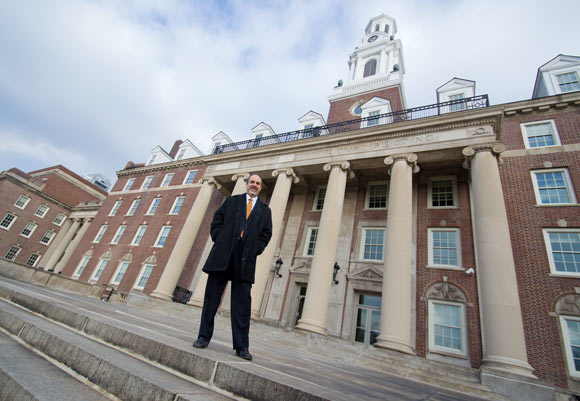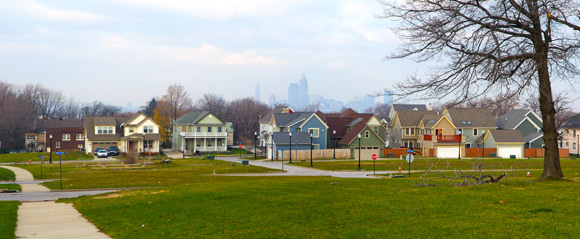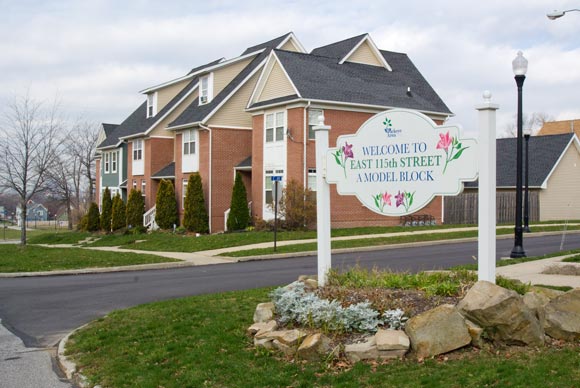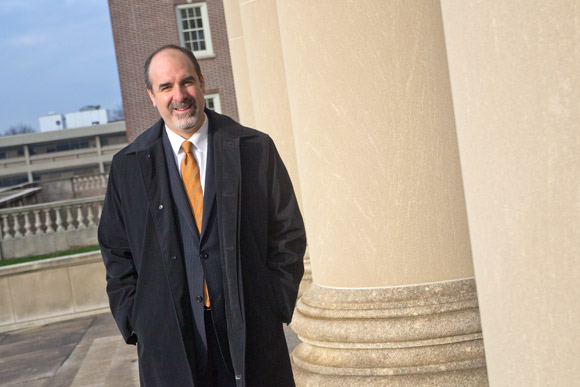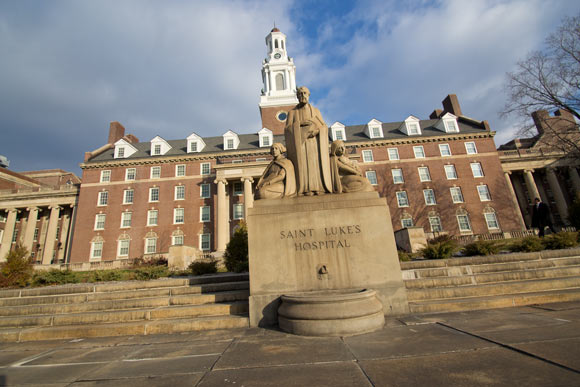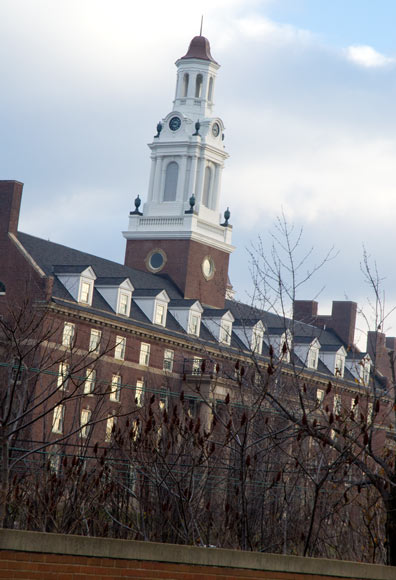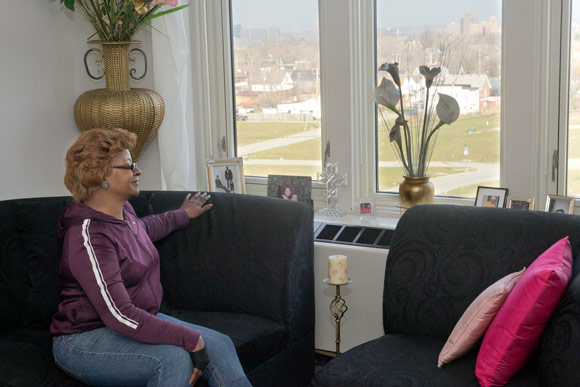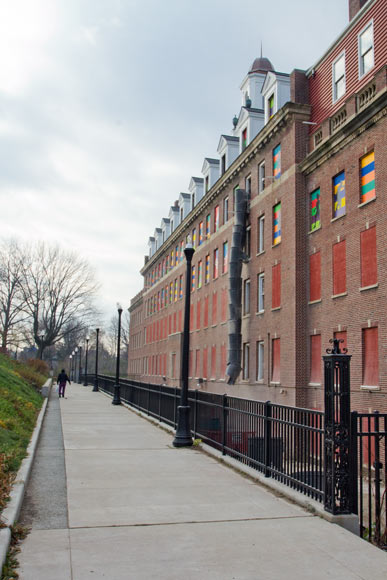forward-thinking cdc's the 'special sauce' behind successful neighborhood redevelopment
Joel Ratner was a bit surprised when the recruiter from Neighborhood Progress Inc. (NPI), a nonprofit organization that provides funding and technical assistance to community development organizations in Cleveland, kept calling him.
“First of all, I’m not a real estate guy,” recalls Ratner, who at the time was happily ensconced in his job as President of the Raymond John Wean Foundation in Youngstown. “Second, I don’t know how to do it. She called a couple of times, and I told her, ‘If you think this is all about real estate, then I’m the wrong guy for you.’”
As head of the Wean Foundation, Ratner had developed a reputation as a feisty change agent. He led the creation of a new community development group in the Mahoning Valley, created a small grants program, and helped fund community organizing.
Apparently, Ratner’s assumption that there’s more to community development than real estate didn’t bother NPI’s board. Ratner, a Northeast Ohio native who now lives in Shaker Heights, was interviewed and became NPI’s President in October 2010.
And so it is that Ratner -- an energetic leader who believes that good schools, public transit and Little League are as critical to neighborhood success as development -- became head of an organization that historically has focused largely on bricks and mortar.
“You can’t just build it. They will not come unless they have the amenities they want,” says Ratner, arguing that for the better part of the past two decades, CDCs built new, market-rate homes while neglecting other, critical aspects of community development. They should have focused on holistic strategies to bring back neighborhoods, he says.
Looking Beyond Housing
This is a key point as Cleveland looks to its future in the wake of the foreclosure crisis. Traditionally, CDCs -- which began in the 1970s as scrappy neighborhood groups but have evolved into professional entities receiving millions of dollars each year in foundation and city funds -- have not focused on issues like improving urban schools.
Or, as Ratner puts it, “Initially, CDCs said, ‘Education in the city is a morass -- we’re going to build new housing.’ It didn’t work. We have to look at why people move into neighborhoods and why they leave. We can no longer neglect areas like education.”
Until 2007, homebuilding was a critical part of Cleveland’s comeback strategy. But the narrow focus on housing might have abetted the foreclosure crisis, Ratner says. As it spread like a brush fire during the recession, seemingly sending decades of investment up in smoke, it also revealed the city’s core problems. Many neighborhoods simply hadn’t dealt with the issues that matter most, like schools and safety, he says.
“Housing made sense at the time, but it turned out that was the easy part,” says Ratner. “The harder part is creating conditions that make people want to stay in neighborhoods.”
The solution, Ratner argues, is for CDCs to change how they do business. They need to adopt a holistic strategy of neighborhood redevelopment that aligns development with the creation of high-performing schools and social services that benefit all residents. It isn’t that CDCs need to stop doing real estate development, he says -- but that it must be part of a larger, more holistic strategy to grow neighborhoods from the inside out.
As success stories worth sharing, Ratner cites the new t-ball league in Ohio City and development of the old Saint Luke’s Hospital into a multigenerational learning campus.
“If we place more emphasis on human development, we can bolster the community and physical development efforts that have taken place over the last 20 years,” he says.
A Multigenerational Model
The former Saint Luke’s Hospital currently is undergoing a $56-million renovation that will transform it into low-income senior apartments, nonprofit space and a new school.
That’s a far cry from just a few years ago, when the structure at Shaker Boulevard and E. 116th Street sat empty, making it prey for scavengers who picked it clean like a carcass.
“The neighbors tell us they were running shifts -- coming and going three times a day,” says Wayne Mortensen, the Enterprise Rose Architectural Fellow at NPI, who has served as owner’s representative for redevelopment of the hospital. “The thieves even climbed up on the cupola of the clock tower and pried the brass arms off the clock.”
Despite the obvious criminal activity that was taking place, many of the neighbors didn’t bother calling the cops, Mortensen says. “There’s an inherent distrust of institutions here, and they thought the building was going to be torn down anyway,” he says.
Yet today, the old Saint Luke’s Hospital not only is still standing -- the grand Georgian-style building has been restored to its former glory while enjoying a new use.
NPI served as developer of the project, buying the building in 2006 from the hospital for $1, doggedly pursuing funding from a range of sources, and renovating it with Philadelphia-based affordable housing developer Pennrose Properties. Saint Luke’s now boasts 137 units of affordable senior housing, with the first residents moving in this year.
“The neighbors are thrilled,” says Mortensen, a Nebraska native who moved to Northeast Ohio to be a part of projects like Saint Luke’s, which blend both physical and human development.
The most striking aspect of Saint Luke’s is that it represents a new, more comprehensive mode of community development, one that weaves together strands of a successful community into a synergistic whole.
At the core of the new Saint Luke’s is the idea that the entire community will be more successful if services are integrated together to create synergies and opportunities. The new Harvey Rice School and the Harvey Rice Branch of the Cleveland Public Library opened here in 2010. In September, The Intergenerational School and a branch of the Boys and Girls Clubs of Greater Cleveland will open inside a wing of the old hospital.
When the project is done, senior citizens in the apartments will volunteer in the schools. TIS and Harvey Rice students will share facilities. And after-school programs and tutoring will be available to neighborhood youth at the Boys and Girls Club.
Saint Luke’s also forges connections to the larger Buckeye-Shaker neighborhood. A $500,000 pathway called the Mews runs through the heart of the project, and RTA intends to complete a $2 million renovation of its adjacent rapid station in 2014.
“Good schools are the key to good neighborhoods; you can’t build housing without that,” says Ratner, who believes the project will be successful because it’s part of a broader approach. “The only way schools will get better is if everyone gets behind them.”
Ironically, just north of the hospital sits a stalled market-rate housing project. About 80 new homes were supposed to be built here before the recession, but it never took off. Today, only 22 homes have been sold, with the remaining sites sitting dormant. Ratner believes the project will be more successful once more amenities are in place.
Now, NPI is challenging CDCs across the city to use projects like Saint Luke’s as a template for their own redevelopment. With the recent passage of the 15-mill school levy and Cleveland Schools CEO Eric Gordon touting an open approach to working with the community, there’s no excuse for every neighborhood not to back great schools.
“CDCs should do deals like Saint Luke’s in their own neighborhoods,” Ratner argues.
No Neighborhood Left Behind
At the core of Ratner’s philosophy towards community development is the idea that every neighborhood in Cleveland deserves effective, impactful CDC leadership. It’s critical to turning around parts of the city like St. Clair Superior, Brooklyn Centre and others that haven’t seen the same redevelopment as Tremont or Ohio City, he says.
“Every part of the city deserves strong services,” he says. “You can tie neighborhood success directly to the dynamic leadership within the CDC. That’s the special sauce.”
Ratner cites Ohio City Inc., which championed the West Side Market Centennial and also established a youth recreation league that offers t-ball, soccer and baseball, as a successful example of this new brand of development.
To facilitate more effective community development practices in city neighborhoods, NPI has waded into the thorny territory of mergers. Last year, the group facilitated a consolidation between Shaker Square Area Development Corporation (SHAD) and Buckeye Area Development Corporation (BADC) to form a bigger, stronger CDC.
That’s easier said than done, as it turns out. When unhappy SHAD members got wind of the merger, they revolted and voted it down. Although a new organization, Buckeye Shaker Square Development Corporation, has now been created, bad blood remains. Ratner says the process could have been managed better, but that it was necessary.
“We need a smaller number of CDCs throughout the city and we need to raise the bar,” he says. “NPI would actually facilitate closures and mergers. We think there’s a lot of interest in having a consolidated CDC system that moves things to the next level.”
India Pierce-Lee, Program Director for Neighborhoods, Housing and Community Development with the Cleveland Foundation, applauded Ratner’s leadership at a discussion about the future of the community development industry in Cleveland recently held at the Levin College of Urban Affairs at Cleveland State University.
“For a long time we did bricks and mortar, but we didn’t do human capital development,” Pierce-Lee told the audience. “Now we’re forced to look at it. Joel realizes the value of asset and wealth building in the community. The work that NPI is doing is important.”
Ratner wants to see the city’s neighborhoods emerge from the foreclosure crisis more resilient than they were before. “There’s a Chinese proverb that says, ‘It’s good to live in moments of crisis because good things come out of them.’ Let’s not waste this crisis. I’m hopeful we can use this moment to pivot to a place where we’re stronger.”
Photos Bob Perkoski


